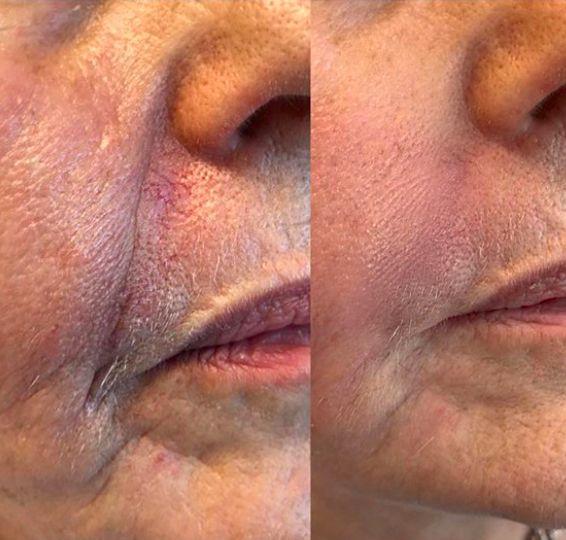
Dissolving Dermal Filler
Dissolving dermal fillers is a procedure frequently requested by patients, particularly those seeking corrective treatment after receiving unsatisfactory results from previous procedures at other clinics. Cosmetic injections are not an exact science. Variations in anatomy, tissue characteristics, and how fillers interact with them can occasionally lead to outcomes that do not meet aesthetic expectations or pose potential risks, such as vascular occlusion or impending necrosis, which could jeopardise healthy tissue.
Common Reasons for Dissolving Dermal Fillers
There are various reasons why dermal fillers may need to be dissolved, including (but not limited to):
- Unwanted or Overfilled Lips: When the lips have been overfilled or the results are not as desired.
- Complications: Issues that arise post-injection, such as infection or allergic reactions.
- Migration: Filler that has shifted or spread to unintended areas.
- Lumps and Unevenness: Irregularities in the texture or distribution of the filler.
- Asymmetry: Uneven results that require correction.
- Allergic Reactions: Swelling or other adverse reactions to the filler.
- Delayed Reactions: Swelling or lumps that appear at the filler site, particularly common in areas like the tear troughs, even months after injection.
Hyalase (Hyaluronidase) for
Filler Dissolving
Hyalase (hyaluronidase) is the enzyme used to dissolve hyaluronic acid-based fillers. While hyaluronidase is naturally present in the body, its use in aesthetic medicine is considered off-label, except in emergency situations. To ensure safety, patients are required to undergo a skin patch test at least 20 minutes before the procedure.
Patch Test Procedure: Hyalase is injected into the subcutaneous layer of the forearm, and the area is observed for any adverse reactions, such as hives, wheals, swelling, or itching.
Test Results: If a positive reaction is observed, the treatment cannot proceed. Normal reactions include erythema (redness) and some vasodilation, but severe reactions, though rare, can still occur despite a negative test.
Important Considerations for Dissolving Dermal Fillers
- Multiple Treatments May Be Necessary: For extensive filler areas like the lips or cheeks, or sensitive areas around the eyes, multiple sessions may be required to completely dissolve the hyaluronic acid. While initial results may not fully resolve the issue, additional treatments usually ensure success.
- Impact on Natural Hyaluronic Acid: The hyaluronic acid naturally present in your body should not be negatively affected by hyaluronidase. However, a slow and steady approach is recommended to minimize any potential adverse effects.
- Allergy Risk: Hyaluronidase is similar to substances found in bee venom. If you are allergic to bees, you may also be allergic to hyaluronidase. A patch test on the forearm is crucial to check for allergic reactions such as redness or swelling.
Aftercare Instructions Include (but not limited to):
- Avoid Touching the Treated Area: Do not touch or apply makeup to the treated areas for at least 6 hours to prevent infection.
- Managing Swelling: Swelling can be reduced by taking an antihistamine.
- Bruising Reduction: Use Arnica cream or tablets to help minimise bruising.
